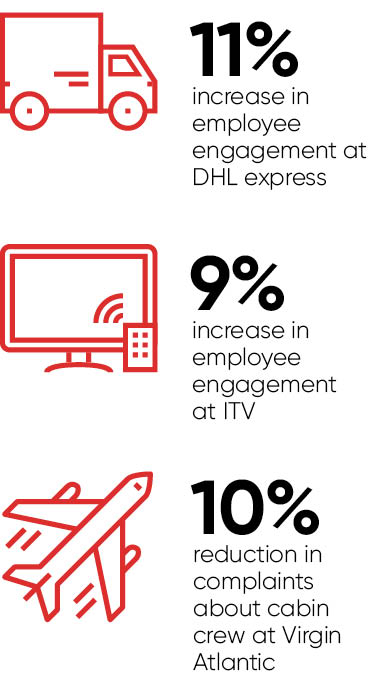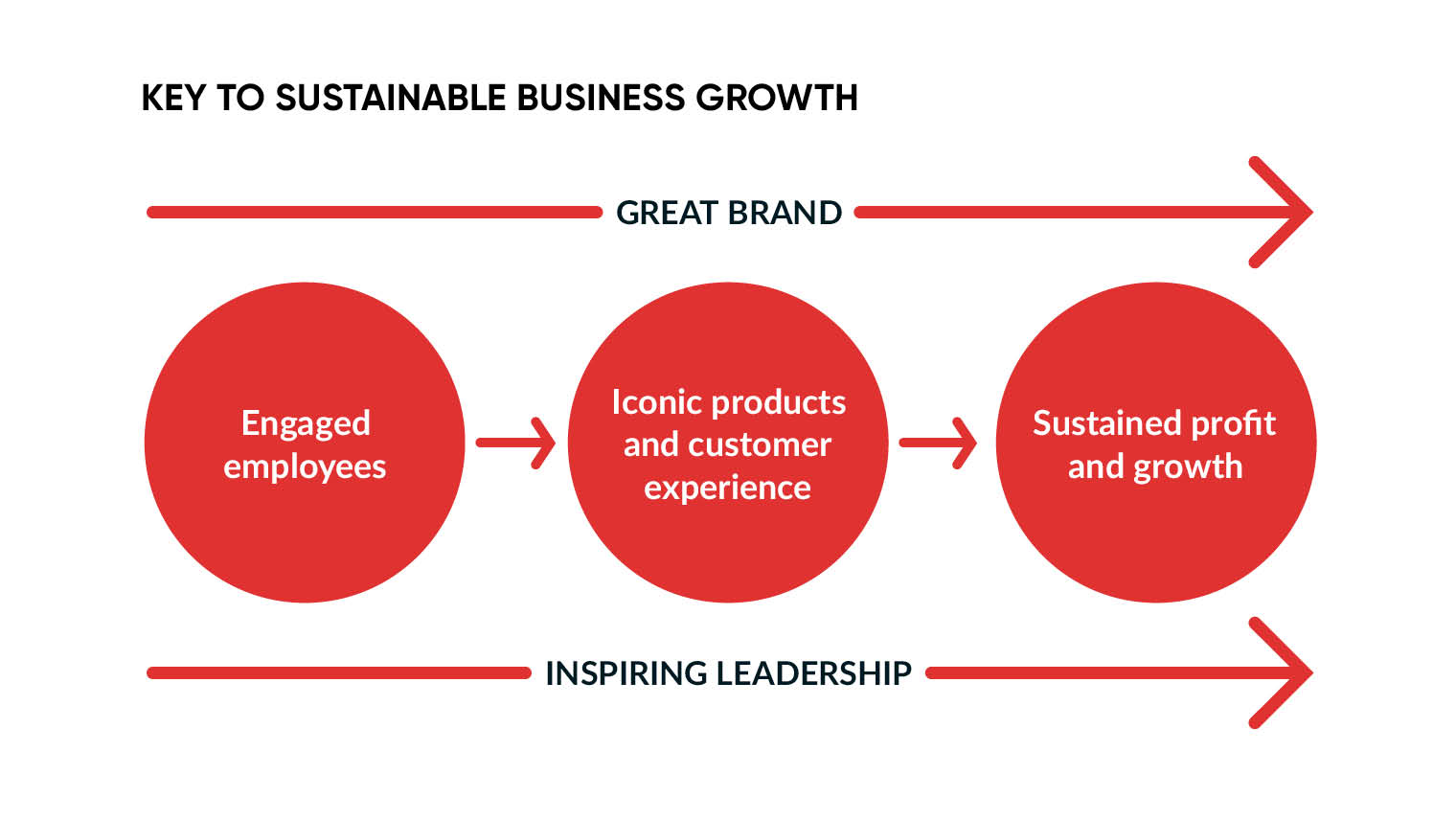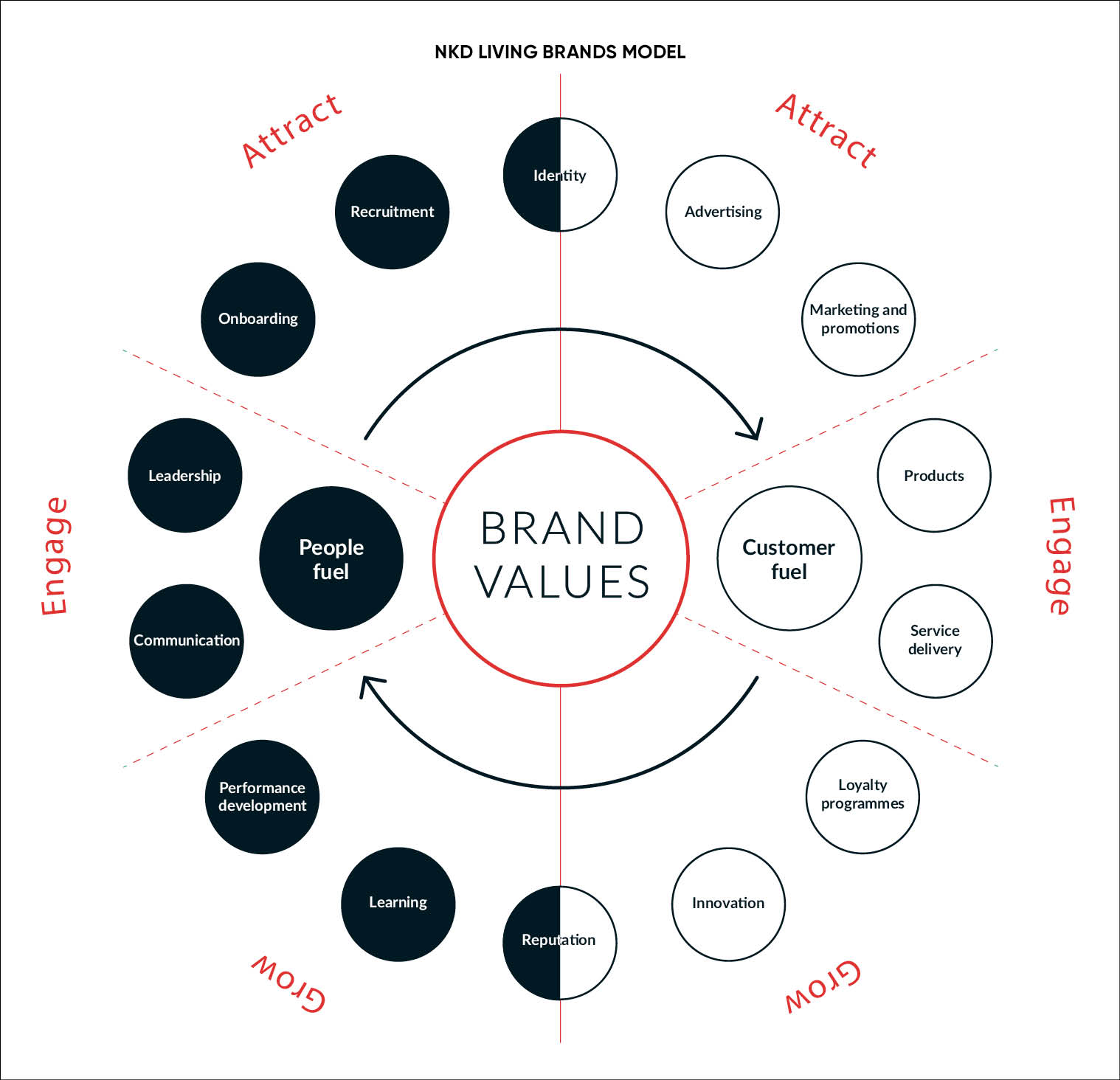How do we define engagement? Academics have poured over this apparently simple question – and rightly so. Countless studies show that when it exists in organisations (because, oddly, we know it when we see it), individuals and teams are far more productive; they’re happier; they’re more innovative; they take less sickness; and ultimately the people they deal with – customers – buy more, and more often.
That’s the easy bit though. Because somehow, trying to translate theory into action has seen businesses getting stuck. In the 90s, customer relationship management was where we thought the answers to customer engagement lay; in the 00s, attention switched to the employee, and onboarding and making sure the corporate culture was right. And yet despite all this, engagement levels in firms are no better than they were and in many cases are worse. So why is this?

Some may not want to hear this, but we feel too many researchers have actually been searching too hard. We believe the quest to find a magical silver bullet has caused many to forget first basics that we are all, actually, humans and so while complex, so-called engagement strategies might be all well and good, if they don’t consider this very important concept, they won’t deliver the changes in performance leaders were hoping for.
Let us explain. Work may have changed, but basic human biology hasn’t. It’s a well-known fact humans will react emotionally to something long before they’ve had time to think about it, within a 200th of a second. They’ll have reacted to it with thought by a 20th of a second. Still quick, but essentially we are all hard wired to react with our emotions and no amount of evolution is going to change this soon. This is true for your customers and your employees.
Fast but negative emotional responses from customers can be devastating to firms’ profits. Last year alone, 28 per cent of UK consumers said they’d spent less with a company or had taken their custom elsewhere after receiving poor service, at a cost of more than £37 billion. This is the reality of increasing choice and equally increasing customer indifference. To us though, emotion doesn’t have to be the problem; it’s also the answer. If people are wired to react emotionally, then the key to real engagement is understanding how the best organisations emotionally connect with employees and how those employees then connect better with customers at a genuinely emotional level.
Great leaders create physiological changes in people and it’s these emotional responses that motivate people to want to do well themselves
OK, that too is easy to say, because working this out is still hard. However, just by understanding engagement is about emotion and relationships, we believe organisations can already be half way there.
So what does real engagement look like? I say imagine you’re at a party with your closest friends. The chances are your host likes you as much as you like them. In these situations, the party host doesn’t wait until their guests’ drinks run dry before asking if they need another. They’re already checking, topping people up as they go along. This to me demonstrates engagement – it’s about people thinking ahead, looking out for other people, making sure they can make them happier because they themselves want them to be happier.
Just think about how powerful this could be if employers could create this sentiment among their people – having employees who want their customers to be the happiest they can, because that’s what makes them have a great day at work too.
This doesn’t have to be impossible. The key characters responsible are line managers. It may sound simple again, but you can do all the research you like, and I have done it, with the likes of McKinsey and Bain in a former private equity life, producing all sorts of key performance indicators on different measures, but time and time again it’s common sense that prevails – the single-biggest predictor of performance in people is the relationship they have with their managers.
Great managers make people feel great. Leaders either light up a room when they enter or the room lights up when they leave. The fact is great leaders create physiological changes in people and it’s these emotional responses that motivate people to want to do well themselves.
When we work with clients, we’re all about infusing people with enthusiasm, reconnecting the brand to its people so their people can reconnect positively with customers, putting the brand’s values at the heart of all customer and employee activity (see graphic above). Sure, there is a serious side of human resources, and there are important policies and processes that matter, but after this we believe engagement is about how brightly you can make your employees’ eyes shine.
One global chief operating officer we work with exemplifies this perfectly. He says that for all the complexity his role has (and it is complex), his job is really actually very simple – to make sure he’s done all the right things to ensure all his people have their best day, every day.

It might sound cheesy, it might even sound over-simplified, but we know it works. One of our longest-standing clients, DHL Express, has transformed itself and its fortunes by redefining its business as an “insanely customer-centric” organisation. It has hired people who support this strategy and said goodbye to management who didn’t believe in this journey. Imitation, as they say, is the greatest form of flattery and so successful has this strategy been that Deutsche Post DHL is now using this emotion-led engagement blueprint across its 500,000 global employees.
Further proof brands increasingly want to create emotional connections with their people and create purpose for their teams, especially millennials, can be found in Deutsche Post’s recently restated purpose. You won’t find anything about it wanting to be the best post and parcel deliverer; it’s much more human than that. Its purpose on this Earth is “connecting people, improving lives”. Helping global communities connect, share and thrive.
With a strategy that reconnects people at an emotional level with their work, we believe the workplace doesn’t have to be a place of indifference at best and disengagement at worst. When everyone in a business is allowed to be a chief energy officer, not only can everyone feel they’re able to make a difference, but everyone has a desire to make a difference too.
As we continue to move more and more into a “purposefulness economy”, where people want to align themselves with an organisation that shares their own personal beliefs, there’s one thing we can safely predict: harnessing people’s emotions will only become more important, not less. At the end of the day, it always pays to engage.
For more information please visit nkd.co.uk

